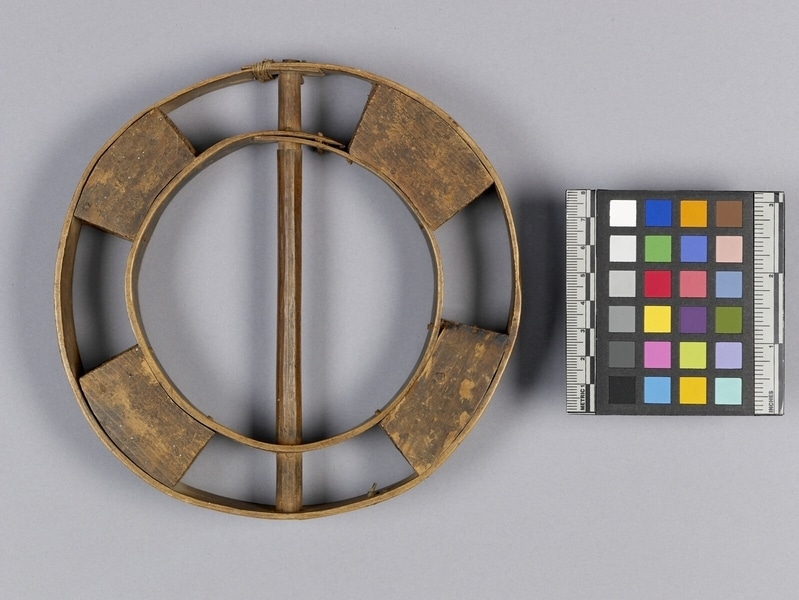Rattle Item Number: A2588 from the MOA: University of British Columbia



Description
Circular rattle formed of two bent concentric circles of wood holding four compartments containing the sound-making pebbles; a wooden rod is inset across the centre. Plain on one side and painted with red criss-crosses on the other, and with red and blue stripes around the outer ring.
History Of Use
Circular rattle used to accompany the halait dance (healer’s dance). Similar circular rattles are also represented in miniature on Haida carvings depicting shamans, and may have once been a form common to other nations of the northern Northwest Coast.
Cultural Context
ceremonial
Narrative
This rattle may be one of a pair, as it is very similar to a rattle (VII-C-1116) in the collection of the Canadian Museum of History (CMH). A pair of circular rattles of this type was owned by Chief Simadiiks (Semedik), of Gitwangak. In 1924, the artist W. Langdon Kihn painted a portrait titled "Portrait of Sem-Medeeks of Gitinanga" (image available online, Wellcome Collection), in which Chief Semedik is shown holding a rattle similar to MOA rattle A2588. Kihn spent the summer of 1924 painting in Gitwangak, on the banks of the Skeena River, having been invited by ethnologist Marius Barbeau. One of the rattles was collected by Marius Barbeau, in 1924, for the Museum of Man (VII-C-1116). Barbeau documented it as one of a pair of circular rattles (“hasɛ’x and hawidzis is the name of this type”) used “to accompany the halait dance” (healers’ dance), and noted that Kihn purchased its mate - the rattle depicted in his painting of Simadiiks. Rattle A2588 was acquired by Walter Koerner sometime before the early 1970s. It was initially classified as Haida, likely because such circular rattles (sometimes called shaman or healers' rattles), were also used by the Haida (-e.g., Am1954,05.928, British Museum, from the Wellcome Coll.), along with other northern coastal peoples.
Item History
- Made in British Columbia, Canada between 1850 and 1920
- Collected in Gitwangak, British Columbia, Canada ?
- Owned by Walter C. Koerner before April 8, 1976
- Received from Walter C. Koerner (Donor) on April 8, 1976
What
Who
- Culture
- Gitxsan
- Previous Owner
- Walter C. Koerner
- Received from
- Walter C. Koerner (Donor)
Where
- Holding Institution
- MOA: University of British Columbia
- Made in
- British Columbia, Canada
- Collected in
- Gitwangak, British Columbia, Canada ?
When
- Creation Date
- between 1850 and 1920
- Ownership Date
- before April 8, 1976
- Acquisition Date
- on April 8, 1976
Other
- Condition
- fair
- Accession Number
- 0336/0048